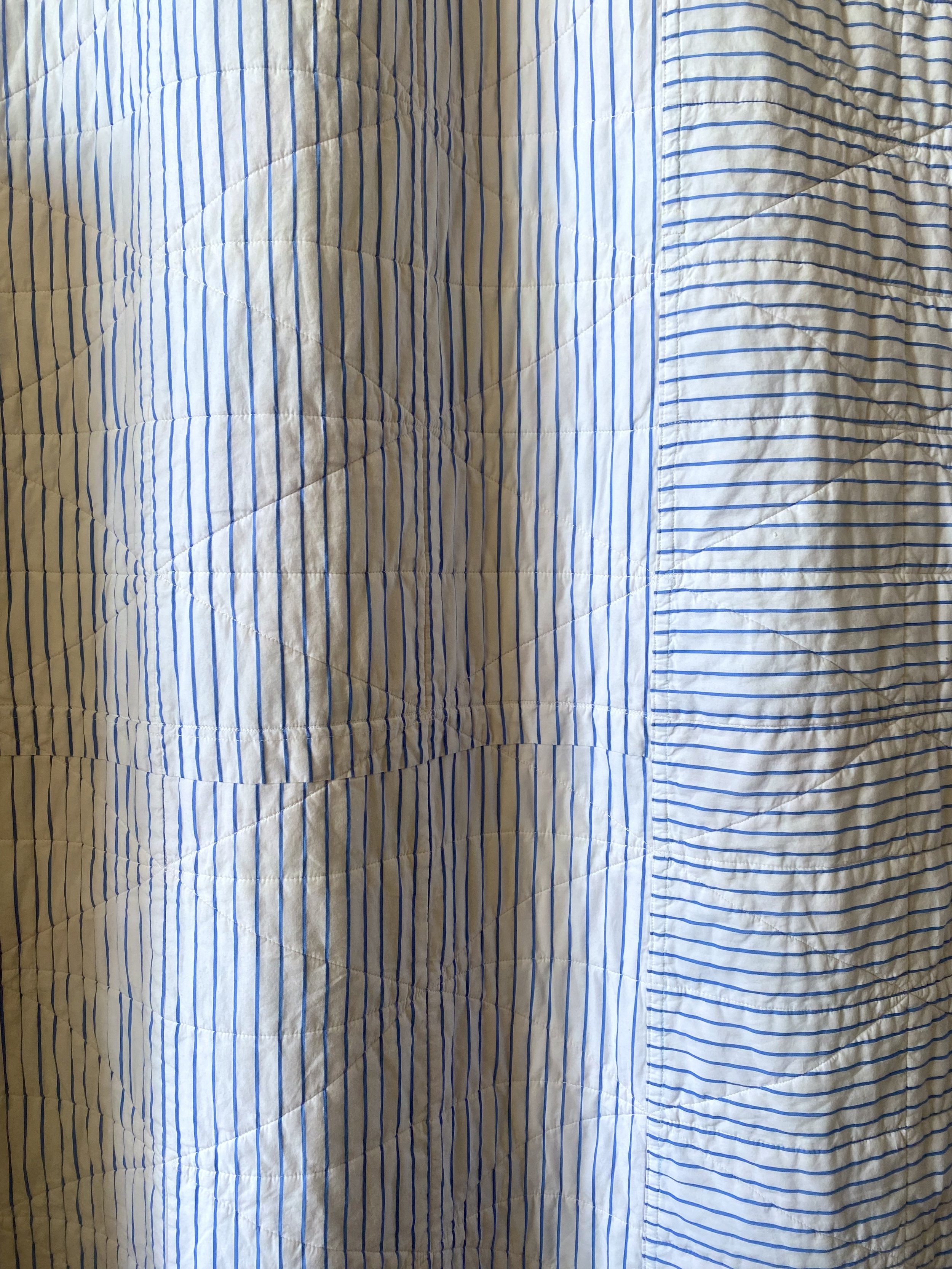 Image 1 of 5
Image 1 of 5

 Image 2 of 5
Image 2 of 5

 Image 3 of 5
Image 3 of 5

 Image 4 of 5
Image 4 of 5

 Image 5 of 5
Image 5 of 5






900 Triangles
Quilt Details
June–Oct 2022
Cotton
112 x 100 inches
Process
Hundreds of half-rectangle triangles, for a king sized bed.
It was a challenge to machine quilt this on a tiny domestic Singer, in a 560 square foot apartment, and it pushed me to learn new ways of managing large work. I decided to work in sections, creating quilted panels and joining them together, instead of quilting the whole piece all at once. To unite the quilted panels, I left a small gap in the quilting so that I could sew only the top layers together on the machine, then, so that the joins would be invisible from the front of the piece, I switched to hand stitching to splice the batting layers together, and finally, another round of hand stitching to close the back seams together. I finished the quilting by making small rows across the splice in the same direction as the rest of the quilting. Most other methods for splicing quilted panels together require the use of fusible tapes, which are synthetic, and I didn’t want to use them.
Machine and hand pieced, machine quilted, machine- and hand bound.
Quilted in the ditch, along the patchwork lines.
Patchwork binding, using offcuts from the quilt top.
Other Bed Sized Quilts
The Grid quilt is a full/queen size, and Tracy is a purple 9-patch queen sized quilt.
Quilt Details
June–Oct 2022
Cotton
112 x 100 inches
Process
Hundreds of half-rectangle triangles, for a king sized bed.
It was a challenge to machine quilt this on a tiny domestic Singer, in a 560 square foot apartment, and it pushed me to learn new ways of managing large work. I decided to work in sections, creating quilted panels and joining them together, instead of quilting the whole piece all at once. To unite the quilted panels, I left a small gap in the quilting so that I could sew only the top layers together on the machine, then, so that the joins would be invisible from the front of the piece, I switched to hand stitching to splice the batting layers together, and finally, another round of hand stitching to close the back seams together. I finished the quilting by making small rows across the splice in the same direction as the rest of the quilting. Most other methods for splicing quilted panels together require the use of fusible tapes, which are synthetic, and I didn’t want to use them.
Machine and hand pieced, machine quilted, machine- and hand bound.
Quilted in the ditch, along the patchwork lines.
Patchwork binding, using offcuts from the quilt top.
Other Bed Sized Quilts
The Grid quilt is a full/queen size, and Tracy is a purple 9-patch queen sized quilt.